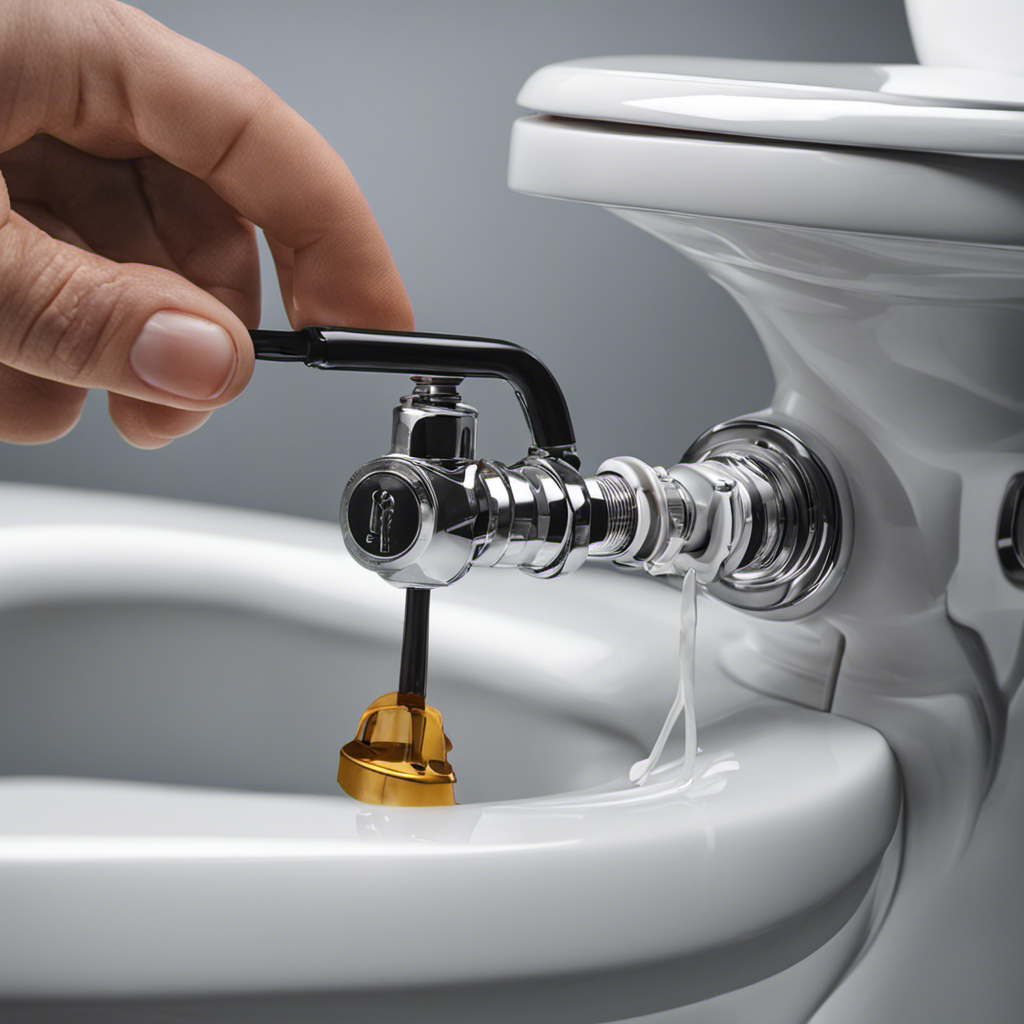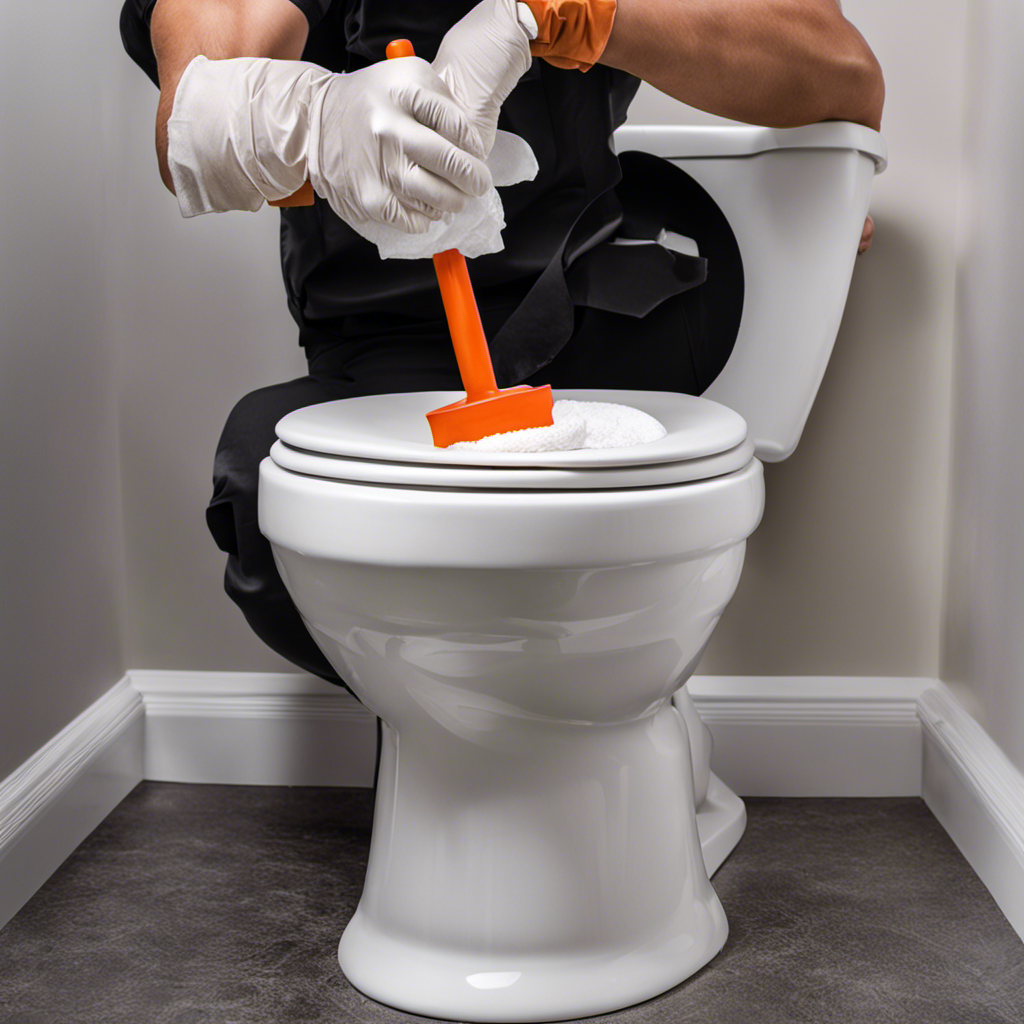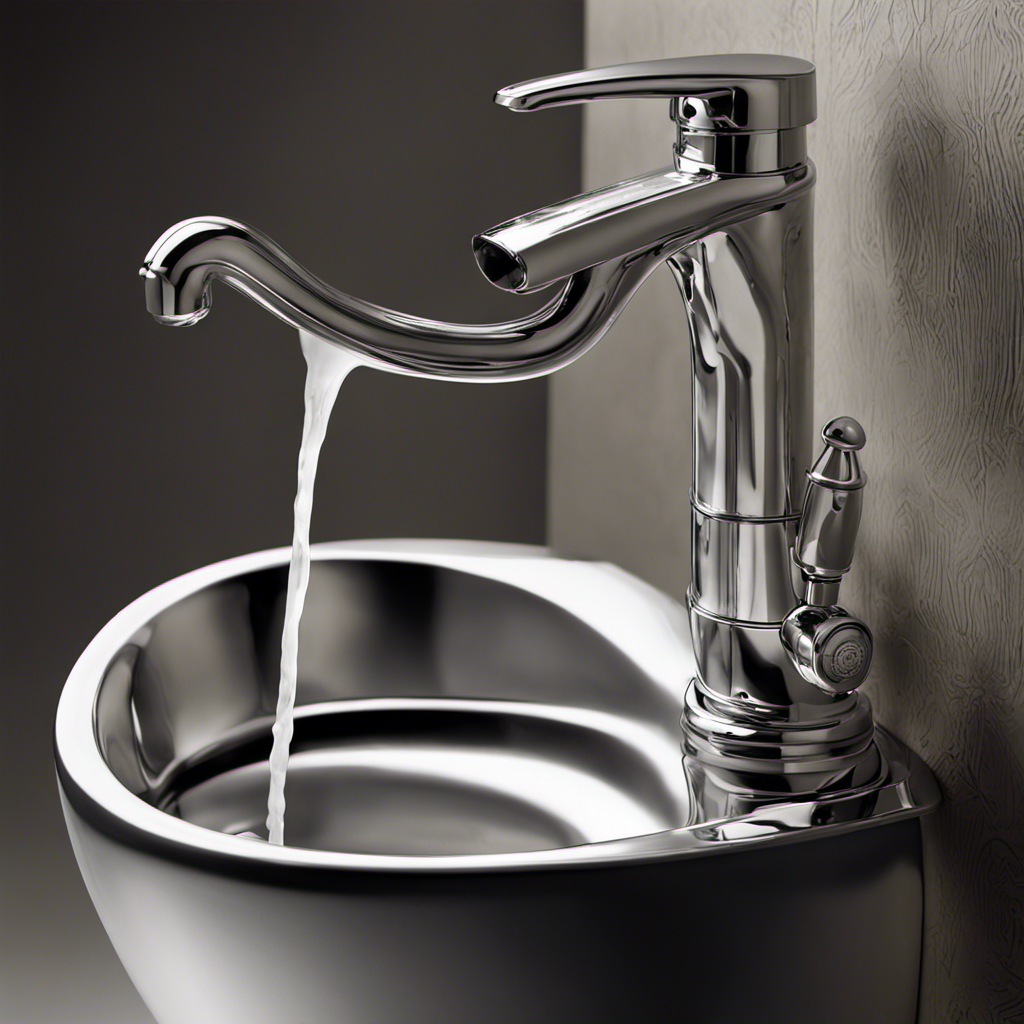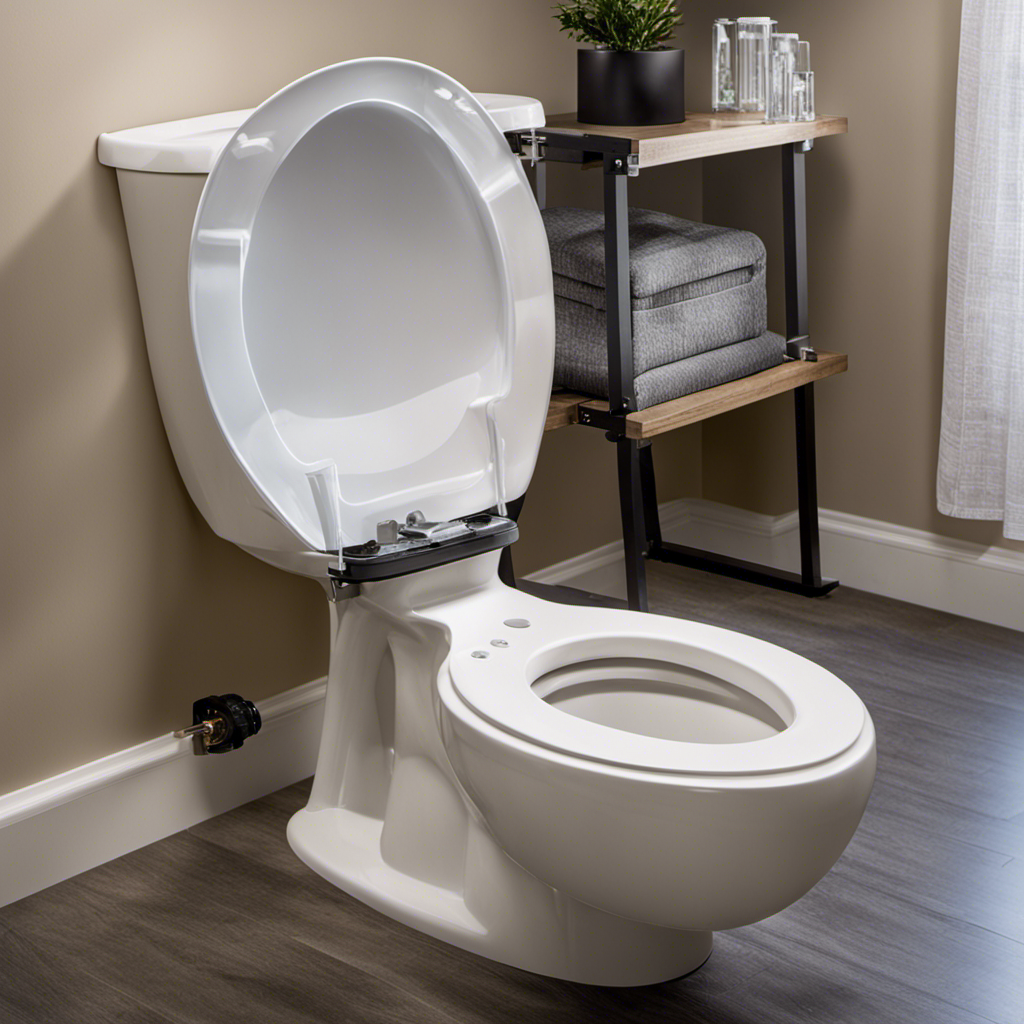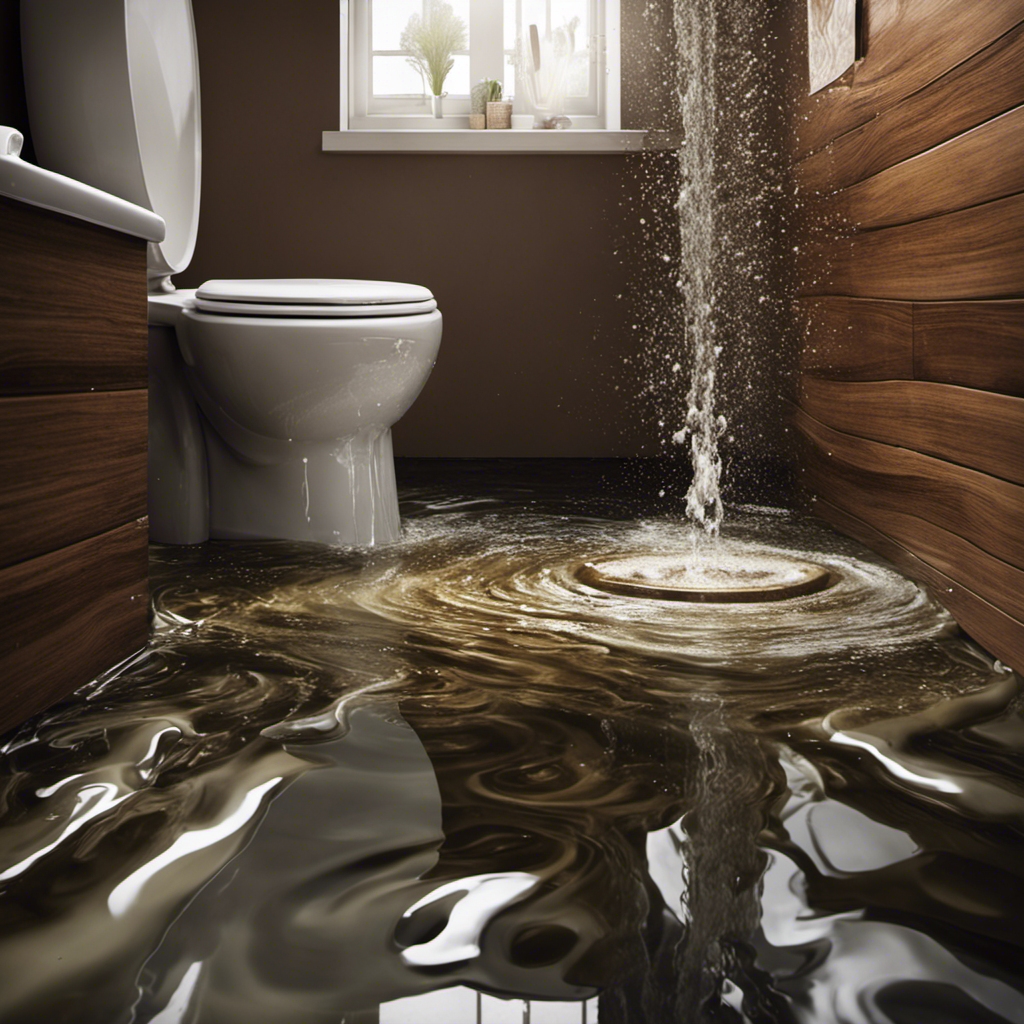Are you tired of the incessant sound of a running toilet? Well, I’ve been there, and I know just how frustrating it can be.
But fear not! In this article, I’m going to share with you my tried and true methods for fixing a running toilet. With a little bit of know-how and a few simple steps, you’ll be able to silence that annoying noise and save yourself from wasting water.
So, let’s jump right in and get your toilet back to working order in no time!
Key Takeaways
- Properly sealing the flapper valve is crucial to prevent a running toilet.
- Shutting off the water supply can prevent further water damage and conserve water resources.
- Regularly checking and replacing worn-out parts like the flapper or fill valve can prevent additional water damage.
- Adjusting the float and replacing the flush valve can resolve the issue of a running toilet and ensure proper flushing while preventing leaks.
Identifying the Problem
To identify the problem, start by checking if the flapper valve is properly sealing the flush valve. This is one of the most common toilet problems that can cause a running toilet. If the flapper valve is not sealing properly, water will continuously flow from the tank to the bowl, leading to a constant running sound.
To troubleshoot this issue, first, remove the tank lid and observe the flapper valve. Ensure that it is in good condition, not cracked or damaged. Also, check if there is any debris or mineral buildup preventing it from making a tight seal. If necessary, clean or replace the flapper valve to fix the running toilet.
Shutting Off the Water Supply
When it comes to dealing with a plumbing emergency, it’s crucial to know how to shut off the water supply.
Finding the shut-off valve is the first step in preventing further water damage. Once located, turning off the water quickly and effectively can save you from a potential disaster.
Finding the Shut-Off Valve
First, check if the shut-off valve is fully closed.
When it comes to finding the water source and repairing a leaking shut-off valve, it is crucial to be knowledgeable and precise. As an experienced plumber, I can confidently guide you through this process.
To locate the shut-off valve, start by checking the area near the toilet. Look for a valve connected to the water supply line. It is usually a small handle or lever that you can turn clockwise to shut off the water. If you can’t find it near the toilet, try looking in the basement or crawl space.
Once you’ve located the shut-off valve, make sure it is fully closed to stop the water flow. This simple step will prevent any further leakage and allow you to proceed with the necessary repairs.
Turning off the Water
Once you’ve located the shut-off valve, you can simply turn it clockwise to stop the water flow. This step is crucial in preventing leaks and conserving water.
As an experienced plumber, I know the significance of turning off the water supply when dealing with any plumbing issue. By shutting off the water, you not only prevent further damage but also save precious water resources. Water conservation is essential for our environment and our wallets.
A running toilet can waste up to 200 gallons of water per day! So, being knowledgeable about turning off the water can make a big difference. Remember, a small action like turning the shut-off valve can have a significant impact on preventing leaks and practicing water conservation.
Preventing Further Water Damage
By shutting off the water supply, you can prevent any additional damage caused by leaks. It is crucial to take immediate action to prevent future leaks and maintain the toilet water level. One effective method is to regularly check and replace any worn-out parts, such as the flapper or fill valve. Another important step is to ensure that the water level in the tank is at the correct level, as indicated by the manufacturer’s instructions. To emphasize these points, here is a helpful table:
| Preventing Future Leaks | Maintaining Toilet Water Level |
|---|---|
| Check and replace worn-out parts | Ensure correct water level |
| Regular maintenance | Follow manufacturer’s instructions |
| Promptly address any leaks | Adjust the fill valve if necessary |
Checking the Flapper Valve
When it comes to maintaining the flapper valve in your toilet, there are a few techniques that I’ve found to be effective.
Regular cleaning and inspection of the valve can help prevent issues such as leaks and running toilets.
However, even with proper maintenance, there are common issues that can arise with the flapper valve, including deterioration or misalignment.
Flapper Valve Maintenance Techniques
To fix a running toilet, start by checking if the flapper valve is properly sealing the flush valve opening. If you’re experiencing issues with your flapper valve, there are a few troubleshooting steps you can take before resorting to a flapper valve replacement.
First, make sure there are no debris or mineral deposits obstructing the flapper valve or the flush valve opening. Clean them thoroughly if necessary.
Next, check the chain length connecting the flapper valve to the flush lever. If it’s too long or too short, it can prevent the flapper valve from sealing properly. Adjust the chain accordingly.
Additionally, inspect the flapper valve for any signs of damage or deterioration. If you notice any cracks or leaks, it’s time to replace the flapper valve.
Common Flapper Valve Issues
One of the most common issues with flapper valves is when they fail to properly seal the flush valve opening. This can lead to a running toilet, where water continuously flows into the bowl. Troubleshooting flapper valve issues is crucial in order to fix this problem.
First, check if the flapper valve is worn or damaged. If so, a flapper valve replacement may be necessary. Additionally, debris or mineral deposits can prevent the flapper valve from sealing properly. Cleaning the flapper valve and the flush valve opening can often resolve this issue.
It is important to ensure that the flapper valve is properly aligned and connected to the chain. Adjustments may need to be made to achieve a proper seal.
Adjusting the Float
You can easily adjust the float in your toilet to fix the issue of it running constantly.
Fixing leaks in a toilet is a common problem that many homeowners face. When dealing with a running toilet, one of the first troubleshooting steps is to check the float. The float is responsible for regulating the water level in the tank. If it is set too high, the water will constantly run and cause the toilet to run continuously.
To adjust the float, locate the float adjustment screw or rod and turn it clockwise to lower the float. This will allow the tank to fill up to the appropriate level and stop the running water. It is important to remember to flush the toilet and observe if the issue is resolved after making the adjustment.
Adjusting the float is a simple and effective solution to fix a running toilet.
Cleaning the Fill Valve
If the water in your toilet tank is constantly flowing, try cleaning the fill valve to resolve the issue.
Cleaning the fill valve is a simple and effective way to fix a running toilet. Over time, debris and mineral deposits can build up in the valve, causing it to malfunction.
To clean the fill valve, start by turning off the water supply to the toilet. Then, remove the valve cap and carefully clean the inside using a cleaning solution. Be sure to remove any clogs or blockages that may be present.
Once the valve is clean, replace the cap and turn the water supply back on. Regular fill valve maintenance is essential to keep your toilet functioning properly and prevent costly water waste.
Replacing the Flush Valve
Now that the fill valve is clean and working properly, it’s time to move on to the next step in fixing a running toilet: replacing the flush valve.
The flush valve is responsible for releasing water from the tank into the toilet bowl when you flush. Over time, it can become worn or damaged, causing leaks or incomplete flushes.
To replace the flush valve, start by turning off the water supply to the toilet and flushing to drain the tank. Next, disconnect the water supply line and unscrew the flush valve from the bottom of the tank.
Install the new flush valve by screwing it into place and reattach the water supply line. Finally, turn the water supply back on and test the toilet to ensure it is flushing properly.
Replacing the flush valve may seem daunting, but with the right tools and a little know-how, it’s a relatively straightforward task that can solve the problem of a running toilet.
Frequently Asked Questions
Can I Fix a Running Toilet Without Turning off the Water Supply?
I’ve fixed a running toilet without turning off the water supply before. It requires troubleshooting the issue, such as adjusting the float or replacing a faulty valve. But it’s important to be cautious and follow proper safety measures.
How Do I Know if the Flapper Valve Needs to Be Replaced?
To determine if the flapper valve needs replacement, I troubleshoot a running toilet. I check for water continuously flowing into the bowl, inspect the flapper for deterioration or leaks, and replace it if necessary.
Is It Normal for the Float to Be Slightly Above the Water Level?
Yeah, it’s normal for the float to be slightly above the water level. It’s like a guardian angel, making sure the water doesn’t overflow. Don’t worry, it’s doing its job!
What Are the Signs That the Fill Valve Needs Cleaning?
When the fill valve needs cleaning, there are several signs to look out for. These include a slow filling tank, weak flushes, and water continuously running into the bowl. It’s important to address these issues promptly to ensure proper toilet functionality.
Can the Flush Valve Be Replaced Without Removing the Toilet Tank?
Yes, the flush valve can be replaced without removing the toilet tank. I’ve done it before and it’s a straightforward process. It’s an effective way to fix a running toilet.
Conclusion
In conclusion, fixing a running toilet is a relatively straightforward task that anyone can tackle with a bit of knowledge and the right tools. By following the steps outlined in this article, you can quickly identify and resolve the issue causing your toilet to run constantly.
Did you know that a running toilet can waste up to 200 gallons of water per day? By promptly fixing a running toilet, not only will you save water and money on your water bill, but you’ll also contribute to conserving our precious natural resources.
So don’t let a running toilet go unchecked – take action today and make a positive impact.
